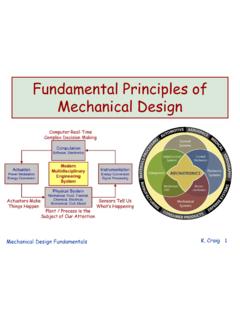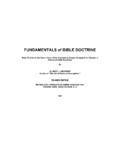Transcription of agile contracts primer
1 agile contracts primer . Derived from the Practices for Scaling Lean & agile Development: Large, Multisite, & Offshore Product Development with Large-Scale Scrum by Tom Arbogast, Craig Larman, and Bas Vodde Version 5. Please send us comments for future versions, at Note: Check website for latest version; share the URL (rather than file) to keep up-to-date. 1. Copyright (c) Tom Arbogast, Craig Larman & Bas Vodde 2012. All rights reserved agile contracts primer TABLE OF CONTENTS. Introduction 3. Part 1: Thinking about contracts 4. Part 2: Common Topics of agile contracts 18. Part 3: contract Models 29. Conclusion 40. Recommended Readings 40. Note: The and structure in this chapter suggests experiments, not formulas. ABOUT THE AUTHORS. Tom Arbogast is a lawyer with years of experience in IT projects and contracts , combined with knowledge of agile principles, systems thinking, and lean thinking.
2 He has worked three sides of the fence: (1) as a contract lawyer for customers of outsourced IT services, (2) as a legal professional for IT outsourcers ( suppliers'), and (3) in business development for suppli- ers (sales agreements influence contract content). Tom leads the Professional Services and Legal Practice teams for ClearEdge Partners Inc., specializing in IT, M&A, Negotiation, Deliv- ery Management and Operations. He served as a VP at British Telecom and in executive and legal positions in telecommunications and technology. He has worked as a lawyer in private practice and argued a number of cases before the Supreme Court of Canada. He is a graduate of the University of Colorado and University of British Columbia Law School. Craig Larman and Bas Vodde are the authors of (1) Scaling Lean & agile Development: Thinking & Organizational Tools for Large-Scale Scrum and (2) Practices for Scaling Lean & agile Development: Large, Multisite, &.
3 Offshore Product Development. They work as organizational-design consultants, and as management and engineering coaches in groups adopting lean thinking and agile develop- ment for very large systems product development, and in offshore' and multisite development. For consulting or more information, please see and 2. Introduction INTRODUCTION. History will be kind to me, for I intend to write it. Winston Churchill Companies have been successfully writing and using agile contracts or evolutionary con- tracts for many years. At Valtech (where Craig worked), they apply Scrum in the outsourced projects they take on both in their Bangalore development center and elsewhere and write contracts that support this. Other agile outsourcers, such as ThoughtWorks, have done likewise. This introduction is written with two audiences in mind: non-lawyers and ( contract ) lawyers.
4 We encourage sharing it with legal professionals since some of the material is written for them1 . because most of the work in creating contracts that support agile values and practices is not in the language of the contract , but in educating legal professionals about these values. This involves understanding and appreciating traditional legal concerns, addressing those, and help- ing lawyers grasp the implications of agility and systems thinking. So the early suggestions focus on understanding. Later topics focus on a few concrete agile - contract suggestions. Caution . For every complex problem, there is a solution that is simple, neat and wrong. Mencken Do not assume that contract negotiations are much less complex or vigorous for legal profes- sionals who grasp the implications of agile principles. It is important to recognize that contract - ing is an inherently complicated process, even more so in a domain of high complexity and uncertainty such as software development.
5 And lawyers, by training and duty, must continue to pay close attention to the frameworks necessary to deal with a breakdown of trust and collabora- tion between parties. 1. This chapter summarizes core agile concepts already familiar to the expert agile reader, assuming legal professionals new to the subject are an important audience. 3. Copyright (c) Tom Arbogast, Craig Larman & Bas Vodde 2012. All rights reserved agile contracts primer PART 1: THINKING ABOUT contracts . Try Share these key insights with contract lawyers The following points are central; they need to be clearly explored with legal professionals: - The structural and legal aspects of agile -project contracts are the same as for contracts of more traditional development styles. The key difference is the approach to and understanding of operational process and delivery and how this is captured in or intersects with contracts .
6 - An understanding of agile and lean principles and systems thinking is necessary for contract lawyers. Why? Because applying these thinking tools leads to less risk and exposure, and that needs to be expressed in the contract . An agile approach enables rapid incrementally deploy- able deliverables and collaborative decision-making between the parties, and so relieves pres- sure on liability, warranty, and similar issues. - contracts reflect people's hopes and, especially, fears. Successful projects are not ultimately born from contracts , but from relationships based on collaboration, transparency, and trust. Successful' contracts contain mechanisms that support the building of collaboration, trans- parency, and trust. As trust builds between a customer and supplier, the commercial and con- tract model should relax' to support increasing customer collaboration over contract negotiation.
7 Overriding fundamental insight Everyone's number one priority is to deliver a successful project (in other words, to realize the busi- ness case), and each member of the organization, including legal professionals, must strive to reduce local optimizations, silo mentality, and Other (legal) concerns are important, but subordi- nate to the goal of project success. This is a shift in mindset because many lawyers see their discrete function as the priority that is, to deliver a successful' contract . Try Lawyers study agile , iterative, & systems-thinking concepts A lawyer writing a contract for an agile project (most commonly, done with Scrum) needs to grasp the key ideas before she can articulate an agile contract . We suggest that legal professionals study introductory material in these subjects. For example: 2. Wastes: 1. Overproduction of features; 2.
8 Waiting and delay; 3. Handoff; 4. Relearning; 5. Par- tially done work; 6. Task switching; 7. Defects (and related testing, inspection, and correction); 8. Underutilizing people; 9. Knowledge loss and scatter; 10. Wishful thinking. 4. Part 1: Thinking about contracts - in the book agile & Iterative Development [Larman03], chapter two, Iterative & Evolution- ary, and chapter three, agile - The Scrum primer ( ). - the section on Continuous Improvement in The Lean primer ( ). - articles on systems thinking; has both articles and many links - in the book Scaling Lean & agile Development [LV08] chapter two, Systems Thinking - this introduction Try Appreciate a traditional lawyer's point of view Legal professionals are wired differently. This rewiring starts from the moment the student enters law school. The concepts of Professional Responsibility and Advocacy become ingrained into a lawyer's way of thinking.
9 Legal professionals are trained to act, under legal duty, to advance their client's interests and protect them against all pitfalls, seen or unseen. How do you define a client's interests? A client would probably say simply the successful delivery of the project. A legal professional will say she is successful if she protects her client to the greatest degree possible against exposure and risk, while at the same time advancing the end goal of the contract /project. One has only to look so far as statutory definitions of a lawyer's duty to see how a lawyer per- ceives her role: (5) A lawyer should endeavour by all fair and honourable means to obtain for a client the benefit of any and every remedy and defence which is authorized by law. The lawyer must, however, steadfastly bear in mind that this great trust is to be performed within and not without the bounds of the So lawyers view their role as being there to protect clients from things they may not even know about.
10 A lawyer is ostensibly trained to be distrustful not necessarily of other people but of unrealistic expectations and outcomes (the waste of wishful thinking), particularly at the start of a project. It is important to appreciate this dynamic in the context of a contract negotiation. When a lawyer states that part of her role is to address contractually the point where trust deteriorates, it does not imply that the lawyer does not trust the other party. Rather, it means that she does not 3. The Law Society of British Columbia; Rules of Professional Conduct. 5. Copyright (c) Tom Arbogast, Craig Larman & Bas Vodde 2012. All rights reserved agile contracts primer necessarily trust the expectations of the anticipated outcome and is mandated to deal with most anticipated outcomes good and bad. The third value of the agile Manifesto is customer collaboration over contract negotiation.





